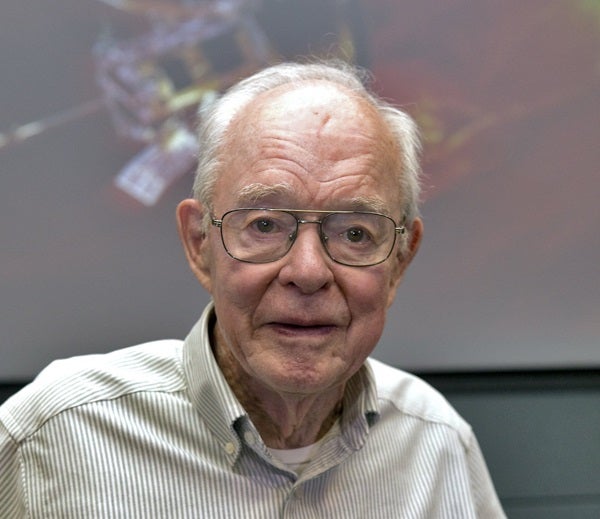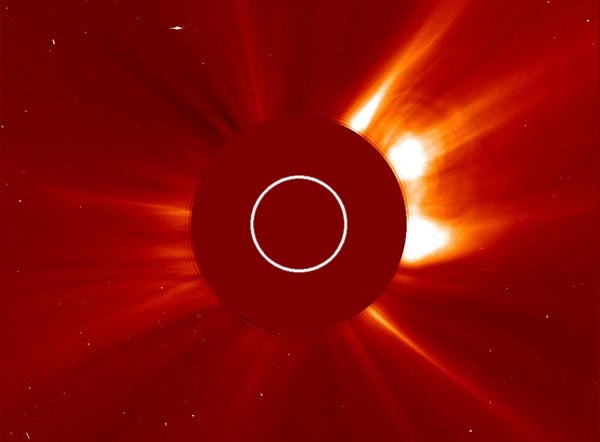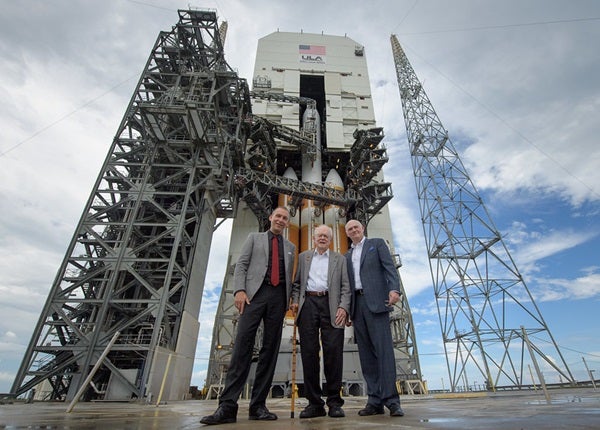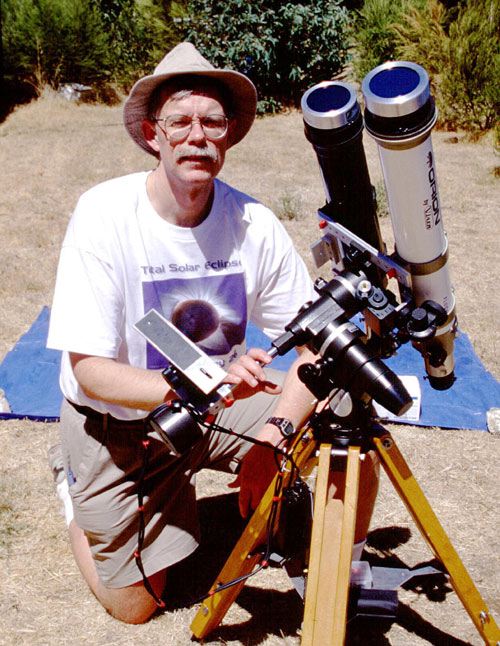Several years after its successful launch, the Parker Solar Probe is making history, effectively touching the Sun to study how our star generates the solar wind of energetic particles it blasts throughout our solar system. This landmark probe is named for heliophysicist Eugene Parker, who veritably invented the field and, in 2018, became the first living person to witness the launch of a spacecraft bearing his name.
The University of Chicago, where Parker spent virtually all of his long career, announced Wednesday that Parker died March 15, 2022, at the age of 94. Since arriving in 1955, Parker served as chair of the university’s Department of Astronomy and Astrophysics from 1972 to 1978 and was still S. Chandrasekhar Distinguished Service Professor Emeritus at the time of his death.
“The field of heliophysics exists in large part because of Dr. Eugene Parker,” said Thomas Zurbuchen, NASA’s associate administrator for science, in a NASA press release.
Predicting the solar wind
That field got its jumpstart in 1958 when Parker, an assistant professor at the time, submitted a paper to the Astrophysical Journal running through hydrodynamic calculations that showed if the temperature of the Sun’s outer atmosphere, the corona, is a million degrees, it must generate an outward flow of energetic particles moving at greater than 1 million miles per hour. Such fast-flying particles moving through our solar system had long been assumed from the way comets’ tails always point away from the Sun. But it was Parker’s calculations that solidly predicted such outflows, dubbed the solar wind, and furthermore proposed a valid physical mechanism to create it.
Of course, few people believed the validity of his work at first. In a 2018 interview with the University of Chicago, Parker said: “The first reviewer on the paper said, ‘Well I would suggest that Parker go to the library and read up on the subject before he tries to write a paper about it. Because this is utter nonsense.’”
According to the University of Chicago, the paper was nonetheless published when the journal’s editor, fellow faculty member Subrahmanyan Chandrasekhar, could find no fault with Parker’s calculations, despite the paper’s apparently outlandish claim.
Then, 1962, NASA’s Mariner II spacecraft encountered exactly the stream of outward-flowing particles in the inner solar system that Parker’s math had predicted — and those previously outlandish results ultimately became mainstream science knowledge.
But Parker’s work on the Sun didn’t stop there. Other major accomplishments during his long career include correctly predicting the spiral shape of the Sun’s magnetic field as it stretches into the outer reaches of the solar system, as well as the prediction that the solar corona is so unexpectedly and blisteringly hot because of nanoflares — the tiny, frequent cousins of bigger, more recognizable solar flares often pictured arcing away from the Sun’s surface.
Parker’s work included studying the magnetic fields not only of stars, but of entire galaxies as well. He also sought to understand how magnetic fields are generated and dissipated, and the many effects they can have on material along the way. Overall, including his 1951 Ph.D. thesis on interstellar dust and gas, Parker has 479 author results listed in the NASA Astrophysics Data System, which tracks science publications.
The Parker Solar Probe
For his unprecedented work, Parker ultimately received the unique distinction of becoming the first living person to have a spacecraft named after him: In 2017, NASA announced it was renaming its Solar Probe Plus to the Parker Solar Probe. The renaming was “a testament to the importance of his body of work, founding a new field of science that also inspired my own research and many important science questions NASA continues to study and further understand every day,” said Zurbuchen, serving as associate administrator for NASA’s Science Mission Directorate at the time.
The probe successfully launched in 2018, with Parker in attendance, and has since made several close passes of our star, first “touching” its upper atmosphere in December last year. Ultimately, the probe will fly within 3.8 million miles (6.1 million kilometers) of our star’s surface — more than seven times closer than any spacecraft before it. The mission aims to study the origins and behavior of solar wind so prominently placed in Parker’s legacy. Ultimately, the probe’s findings will teach us more about how our star behaves and what that behavior means throughout our solar system, as the solar wind swells and ebbs. In the meantime, it is showing us new views of Venus as is passes by and has even recorded the sound of the solar wind.
Eugene Parker was known for his endless curiosity, enthusiasm, and wonder about the universe around us. Today, researchers in areas across astronomy have been touched by his visionary work. And, said Nicola Fox, director of the Heliophysics Division at NASA Headquarters in Washington, D.C., “Even though Dr. Parker is no longer with us, his discoveries and legacy will live forever.”












